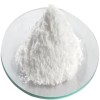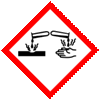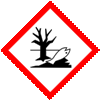Chlorhexidine Base or CHX Manufacturers, with SDS GHS MSDS Sheet |
Supplier, Manufacturer, Exporter of Chlorhexidine Base, Muby Chemicals of Mubychem Group, established in 1976, is the original manufacturers of Specialty Chemicals, Pharmaceutical Excipient, Fragrance Food & Flavor chemicals, Reagent Grade Chemicals, Shale Gas Fracturing Chemicals in India. Mubychem Group has several manufacturing facilities spread across Western India and world wide contacts and toll manufacturers. We are exporting globally to countries like USA, Canada, Europe, UAE, South Africa, Tanzania, Kenya, Egypt, Nigeria, Cameroon, Uganda, Turkey, Mexico, Brazil, Chile, Argentina, Dubai, Korea, Vietnam, Thailand, Malaysia, Indonesia, Australia, China, Germany, France, Italy, Portugal, Bangladesh, etc. The products are offered as per required specifications and in correct shape and size in mm or meshs or microns as specified by the buyer. The participating units have one or more accreditations like FDA - cGMP and GLP approval, ISO-9001 Certified, "REACH" Registered, ISO-14001, ISO/IEC 17025, ISO-22000, FSSC 22000, ISO 45001, Kosher Certified, Halal Certified, HACCP, FSSAI. We offer Commercial Pure & IP BP EP Ph Eur USP NF JP FCC Food Grade Analytical Reagent Grades of Chemicals |
| Bookmark this Web Site -- or -- Email This Page Info to a Colleague or Yourself |
Search our website here:







Chlorhexidine Base or CHX CAS Number 55-56-1, EINECS EC Number: 200-238-7, Molecular Formula: C22H30Cl2N10, Molecular Weight: 505.45, HS Code 29181990 or 29252990
How big is your requirement or how small
We serve it all.
Specifications, Safety Data Sheet, Manufacturing process details, Wholesale retail buy sell prices, Uses etc available on line in these pages for Chlorhexidine Base or CHX.
For SDS MSDS Sheet Click
SDS MSDS Sheet of Chlorhexidine Base or CHX Manufacturers
Chlorhexidine Base
CHX Pure Suppliers

Chlorhexidine or CHX is a disinfectant and antiseptic that is used for skin disinfection before surgery and to sterilize surgical instruments. It may be used both to disinfect the skin of the patient and the hands of the healthcare providers. It is also used for cleaning wounds, preventing dental plaque, treating yeast infections of the mouth, and to keep urinary catheters from blocking.
Specifications of Chlorhexidine Base:
Description: White Powder
Melting point: 132- 136C
LOD: NMT 0.5%
Sulphated ash: NMT 0.1%
PCA Content: NMT 100ppm
ASSAY by HPLC: 98-102%.
We also manufacture and supply as under:
Chlorhexidine Gluconate Solution
Chlorhexidine Hydrochloride or Chlorhexidine HCl
L-Histidine Base or 2-Amino-3-(1H-imidazol-4-yl)propanoic Acid
Manufacturers:
MUBY CHEMICALS
Ambernath Mumbai, Ankleshwar Gujarat, India
TEL: (OFFICE) +912223770100, +912223726950
Current Date Time in India GMT+5:30
e-mail: info@mubychem.com
USA, Canada, Mexico and other American
neighbouring buyers may
e-mail: us@mubychem.com
Call toll-free 1-877-682-9243 (1-877-MUBYCHEM)

Copyright and Usual Disclaimer is Applicable.
Last
18 August, 2024




Exporters to USA Canada UAE Europe South Africa Tanzania Kenya Uganda Egypt Nigeria Turkey Mexico Brazil Argentina Chile Dubai etc.
Global or International Suppliers, Exporters, Importers, Manufacturers
I shall pass through this world, but once. If therefore, there is any good that I can do, or if there is any favor that I can show to a fellow human being, let me do it now. Let me not defer or neglect it. For I shall not tread this way again
Chlorhexidine SDS, Safety Data Sheet
MSDS Sheet, Material Safety Data Sheet 24-Dec-22
1. Product Identification
Product Name & Other Names: Chlorhexidine or 1,1′-Hexamethylenebis[5-(4-chlorophenyl)biguanide].
CAS No.: 55-56-1
EINECS EC Number: 200-238-7
Molecular Weight: 505.45
Chemical Formula: C22H30Cl2N10
Relevant uses and uses advised against (if any): Industrial Manufacturing.
Suppliers: As per letterhead.
2. Hazards Identification
GHS, Globally Harmonized System Classification in accordance with 29 CFR 1910
Classification according to Regulation (EC) No 1272/2008
Serious eye damage Category 1, H318
Hazardous to the aquatic environment, long-term hazard Category 1, H410
Labeling according to Regulation (EC) No 1272/2008
GHS Label Elements  Corrosive |
GHS Label Elements |
Signal Words: Danger
Hazard statements:
H318: Causes serious eye damage.
H410: Very toxic to aquatic life with long lasting effects.
Precautionary statements:
P264 Wash thoroughly after handling.
P270: Do not eat, drink or smoke when using this product.
P273: Avoid release to the environment.
P280: Wear protective gloves/protective clothing/eye protection/face protection.
P281: Use personal protective equipment as required.
P305+P351+P338: IF IN EYES: Rinse cautiously with water for several minutes. Remove contact lenses, if present and easy to do. Continue rinsing.
P391: Collect spillage.
P405: Store locked up.
P501: Dispose of contents/container in accordance with local/regional/national/international regulation.
Classification according to EU Directives 67/548/EEC or 1999/45/EC:
Hazard Symbols:
C Corrosive.
N Dangerous for the environment Harmful.
Risk Phrases:
R41 Risk of serious damage to eyes.
R50/53 Very toxic to aquatic organisms, may cause long-term adverse effects in the aquatic environment.
3. Composition/Information on Ingredients
Product Name & Other Names: Chlorhexidine or 1,1′-Hexamethylenebis[5-(4-chlorophenyl)biguanide].
CAS No.: 55-56-1
EINECS EC Number: 200-238-7
4. First Aid Measures
Always seek medical attention after first aid measures are provided.
Inhalation: Allow the victim to rest in a well-ventilated area. Seek immediate medical attention.
Ingestion: Give large amounts of water to drink. Never give anything by mouth to an unconscious person. Get medical attention.
Skin Contact: Immediately flush skin with plenty of soap and water for at least 15 minutes. Remove contaminated clothing and shoes and wash before reuse. Get medical attention if irritation develops.
Eye Contact: Immediately flush eyes with running water for at least 15 minutes, keeping eyelids open. Cold water may be used. Get medical attention immediately.
5. Fire Fighting Measures
Fire: As with most organic solids, fire is possible at elevated temperatures or by contact with an ignition source. Carbon oxides, Nitrogen oxides (NOx), Hydrogen chloride and fumes are evolved in fire condition.
Explosion: Fine dust dispersed in air in sufficient concentrations, and in the presence of an ignition source is a potential dust explosion hazard.
Fire Extinguishing Media: Water spray, dry chemical, alcohol foam, or carbon dioxide.
Special Information: In the event of a fire, wear full protective clothing and NIOSH-approved self-contained breathing apparatus with full face piece operated in the pressure demand or other positive pressure mode. At high temperatures under fire conditions, it may produce toxic or irritating fumes. Fire-extinguishing work is done from the windward and the suitable fire-extinguishing method according to the surrounding situation is used. Uninvolved persons should evacuate to a safe place.
6. Accidental Release Measures
Personal precautions, protective equipment, and emergency procedures: Avoid breathing dust/fumes/gas/mist/vapors/spray. Ensure adequate ventilation. Use individual protective equipment (waterproof boots, suitable protective clothing, safety glasses, etc.). Restrict unprotected personnel from the area. Prevent any contact with hot surfaces. Do not approach facing the wind. Do not touch the spilled material.
Environmental precautions: Do not let the product enter drains, soil, or water sources.
Methods and materials used for containment cleanup procedures and Storage:
Small Spill: Dilute with water and mop up or absorb with an inert dry material and place in an appropriate waste disposal container. Finish cleaning by spreading water on the contaminated surface and dispose of according to legal authority requirements.
Large Spill: Contain spilled material. Cover with an inert material and put the spilled material in an appropriate waste disposal. Finish cleaning by spreading water on the contaminated surface and dispose of according to legal authority requirements.
7. Handling and Storage
Precautions for safe handling: Apply according to good manufacturing and industrial hygiene practices. Ensure proper ventilation. Wash thoroughly after handling. Do not drink, eat, or smoke while handling. Avoid contact with skin, eyes, and clothing. Minimize dust generation. Avoid breathing dust/fumes/gas/mist/vapors/spray. Avoid contact with eyes, skin, and clothing. Keep container tightly closed. Avoid ingestion and inhalation. Use individual protective equipment (waterproof boots, suitable protective clothing, safety glasses, etc.). Prevent any contact with hot surfaces.
Conditions for safe storage, including any incompatibilities: Store in cool, dry, and ventilated area away from heat sources and protected from sunlight in tightly closed original container. Keep air contact to a minimum. Do not leave the material container open. Store protected from heat, sparks and ignition sources and incompatible materials. Avoid contact with skin and eyes. Avoid inhalation of dust/mist/vapor. Do not store with incompatible materials like strong oxidizers. Store away from sources of heat, moisture.
8. Exposure Controls/Personal Protection
Airborne Exposure Limits: None established.
Ventilation System: A system of local and/or general exhaust is recommended to keep employee exposures as low as possible. Local exhaust ventilation is preferred because it can control the emissions of the contaminant at its source, preventing dispersion of it into the general work area. Please refer to the ACGIH document, Industrial Ventilation, A Manual of Recommended Practices, most recent edition, for details.
Personal Respirators (NIOSH Approved): For conditions of use where exposure to dust or mist is apparent and engineering controls are not feasible, a particulate respirator (NIOSH type N95 or better filters) may be worn. If oil particles (e.g. lubricants, cutting fluids, glycerin, etc.) are present, use a NIOSH type R or P filter. For emergencies or instances where the exposure levels are not known, use a full-face positive-pressure, air-supplied respirator. WARNING: Air-purifying respirators do not protect workers in oxygen-deficient atmospheres.
Skin Protection: Wear protective gloves and clean body-covering clothing.
Eye Protection: Use chemical safety goggles and/or full-face shield where dusting or splashing of solutions is possible. Maintain eye wash fountain and quick-drench facilities in work area.
Other Control Measures: Maintain good housekeeping in work area. Dust deposits on floors and other surfaces may pick up moisture and cause the surfaces to become slippery and present safety hazards. Handle in accordance with good industrial hygiene and safety practice. Wash hands after handling.
9. Physical and Chemical Properties
Appearance: White solid.
Odor: Not available.
Odor threshold: Not available.
pH: Not available.
Relative density: Not available.
Melting point/freezing point: 132C - 136C
Initial boiling point and boiling range: Not available.
Flash point: Not available.
Auto-ignition temperature: Not available.
Decomposition temperature: Not available.
Upper/lower flammability or explosive limits: Not available.
Vapor pressure: Not available.
Vapor density: Not available.
Evaporation rate: Not available.
Flammability (solid, gas): Not available.
Partition coefficient: n-octanol/water: Not available.
Solubility: Soluble in water.
Viscosity: Not available.
Molecular Weight: 505.45
Chemical Formula: C22H30Cl2N10
10. Stability and Reactivity
Stability: Stable under ordinary conditions of use and storage.
Hazardous Decomposition Products: When heated to decomposition it emits toxic fumes of Carbon oxides, Nitrogen oxides (NOx), Hydrogen chloride and unidentified fumes.
Hazardous Polymerization: Will not occur.
Incompatibilities: Strong oxidizers.
11. Toxicological Information
Acute toxicity:
LD50 Oral - Rat - >5000 mg/kg.
LD50 dermal - Rabbit - >2815 mg/kg.
Carcinogenic Effects: Not a reported carcinogen by IARC NTP ACGIH OSHA.
12. Ecological Information
Toxicity to fish: semi-static test LC50 - Danio rerio (zebra fish) - 1,4 mg/l - 96 h.
Toxicity to daphnia and other aquatic invertebrates: static test EC50 - Daphnia magna (Water flea) - 0,049 mg/l - 48 h
This substance/mixture contains no components considered to be either persistent, bioaccumulative and toxic (PBT), or very persistent and very bioaccumulative (vPvB) at levels of 0.1% or higher.
13. Disposal Considerations
Whatever cannot be saved for recovery or recycling should be managed in an appropriate and approved waste disposal facility. Processing use or contamination of this product may change the waste management options. State and local disposal regulations may differ from federal disposal regulations. Dispose of container and unused material in accordance with legal requirements.
14. Transport Information
DOT USA, TDG Canada & ADR/RID Europe:
UN/ID no UN3077
Hazard Class 9, Packing Group III.
Proper shipping name Environmentally hazardous substance, solid, (Chlorhexidine)
Description UN3077, Environmentally hazardous substance, solid, (Chlorhexidine), 9, III.
IMDG/IMO:
UN/ID no UN3077
Hazard Class 9, Packing Group III.
Proper shipping name Environmentally hazardous substance, solid, (Chlorhexidine)
Description UN3077, Environmentally hazardous substance, solid, (Chlorhexidine), 9, III.
IATA/ICAO:
UN/ID no UN3077
Hazard Class 9, Packing Group III.
Proper shipping name Environmentally hazardous substance, solid, (Chlorhexidine)
Description UN3077, Environmentally hazardous substance, solid, (Chlorhexidine), 9, III.
15. Regulatory Information
USA:
SARA 311/312 Hazard Categories: Acute health hazard, Chronic Health Hazard. See section 2.
California Proposition 65: This product does not contain any Proposition 65 chemicals.
16. Other Information
European Labeling in Accordance with EC Directives:
H318: Causes serious eye damage.
H410: Very toxic to aquatic life with long lasting effects.
Classification according to EU Directives 67/548/EEC or 1999/45/EC:
Hazard Symbols:
C Corrosive.
N Dangerous for the environment Harmful.
Risk Phrases:
R41 Risk of serious damage to eyes.
R50/53 Very toxic to aquatic organisms, may cause long-term adverse effects in the aquatic environment.
Disclaimer:
**************************
Our company provides this MSDS sheet in good faith but makes no representation as to its comprehensiveness or accuracy. This SDS sheet is intended only as a guide to the appropriate precautionary handling of the material by a properly trained person using this product. The above information has been compiled from various sources and has the possibility of discrepancy and being out-dated information. Individuals receiving the information must exercise their independent judgment and do further search in determining its appropriateness for a particular purpose. In no case shall our company be liable to loss or damages by the product user.
**************************
















